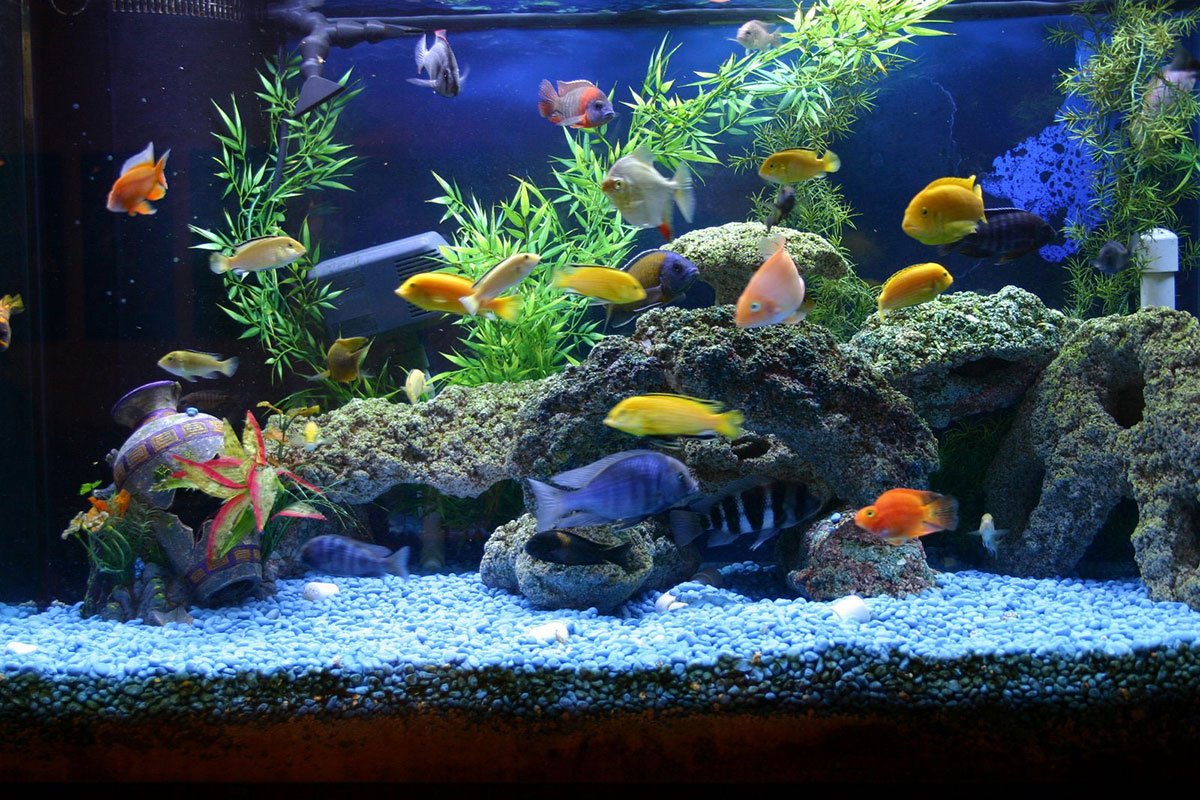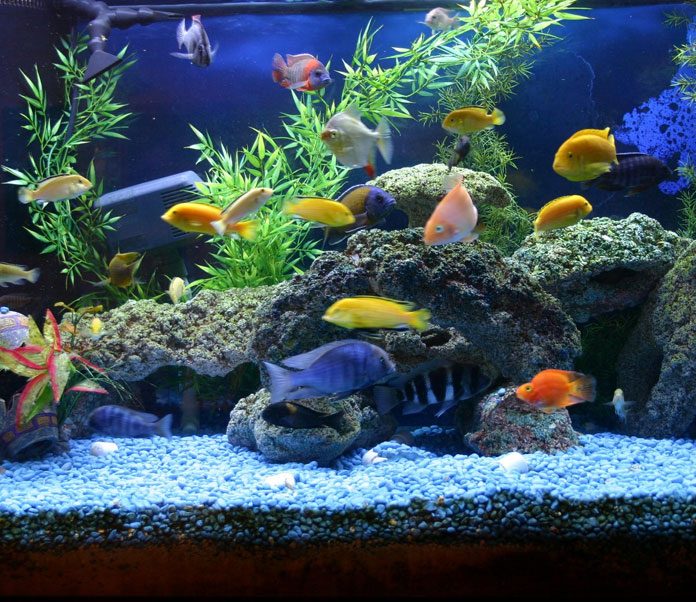The most important factor of owning an aquarium is the proper cleaning of the tank. Many new owners are unsure of how to go about this. This information will help new freshwater aquarium owners keep a clean and healthy tank.
These first two questions are the key to maintaining your aquarium allowing you to enjoy this beautiful addition to your home.
When should I clean my tank? You should clean your tank once every two months unless you can really tell it needs cleaned before then. Why should I clean my tank once every two months? Because your tank will start building up algae on the inside and your gravel will retain waste that could make your fish ill in the future.
The following steps are easy and quick and will provide your fish with a clean and happy aquarium.

Step 1 (prepare for cleaning)
You have to prepare for the steps to follow before removing your fish from your freshwater aquarium. There are some supplies you will need to clean the tank, so it’s best to have them handy before starting. You will need some kind of container that your fish can be placed in until it’s time for them to be put back in the tank. It doesn’t have to be a large container, but make sure your fish do have enough room to swim freely. This container is dependant on how many fish are living in the tank. You will also need a fish net, a towel or paper towels to wipe up any spills that may occur, a water pitcher or a bucket for refilling the tank, food drainer, a clean sponge, and a clean rag. After you have these things gathered, you’re now ready to begin cleaning your freshwater aquarium.
Step 2 (Removing your fish)
This may be the most important step in the cleaning process. It is time to remove the fish from the tank. The first thing to do is make sure that the container in which the fish are being placed has water that is about the same temperature at the tank, other wise your fish will go into shock. When the container of water is ready, use the net to catch each fish one-by-one and place them in the container. Once all the fish are collected, be sure to place the container in a safe place where it will not be spilled. It is common for fish to become stressed when they are moved, so the water temperature and reducing as much unneeded activity is very important.
Step 3 (Removing the fish tanks old water)
When all the fish are out of the tank, it is time to start emptying the water from the aquarium. Using the pitcher or small bucket, begin to remove the water. The water from the tank may be disposed in a sink or toilet. This can be a messy task, so be sure to clean up all spills to prevent any possible accidents. It is not necessary to remove all the water from the tank. Most freshwater aquarium owners remove approximately 3/4 of the water. The remaining original water will help acclimate the new water you will add later.
Step 3 (Removing and cleaning your tanks gravel)
Most of the waste that gathers in a tank settles into the gravel at the bottom. It is very important to clean the gravel when you clean your tank. At this time you will remove the gravel. You can use the fish net, a small scoop or even a dustpan to do this. Place the gravel in a container. Once you have removed all the gravel, transfer it into a strainer of some sort and run it under hot water. Be sure to mix it up while you are rinsing so that all the sediment and waste is removed. Once the gravel has been cleaned, place it aside. You will not be putting it back in the tank at this time.
Step 4 (Cleaning the tank)
Now it’s time to clean the inside of the tank. This can be a tedious chore if there is a lot of build-up on the glass. Some freshwater aquariums have algae growth on the glass. The warmer the water is inside and the more the aquarium is exposed to natural sunlight, the more algae growth you will have. This can be cleaned off by using a scratch pad. Try to use the least abrasive pad you can to avoid scratching the class. Cleaning with hot water will aid in the removal of algae. Make sure to never use any type of cleaner or detergent when cleaning the tank. This will be fatal to the fish. After removing the algae, finish by wiping down the rest of the tank with a towel or soft rag. You may have to repeat this a few times. Try to rinse the rag or towel frequently to remove all the waste. If you have decorative pieces in the tank, be sure to wash them as well using hot water. After completing these steps, your tank should be clean of waste and build-ups.
Step 5 (Putting it all back together)
Now it’s time to replace everything. Start by replacing the gravel into the tank, followed by refilling the water. Take notice of the temperature once again. Try to add water that is of the same temperature as the original water in the tank. Add your finishing touches with decorative pieces, then carefully move the fish back in. It may take a little while for the fish to adjust to the new water, but after having followed all these steps, you can be sure that your tank is clean and healthy.
You won’t have to completely clean your tank for another 2 months. Always remember to change the filters if they are dirty. As an added tip, if you remove 20% of the water every month and replace it with clean water, this will cut down on the complete cleaning of the tank in the future. To maintain a healthy tank, it is important to clean it properly and keep up with the aquarium care. By doing this, you will ensure a long life for your fish and an enjoyable experience for observers.


































